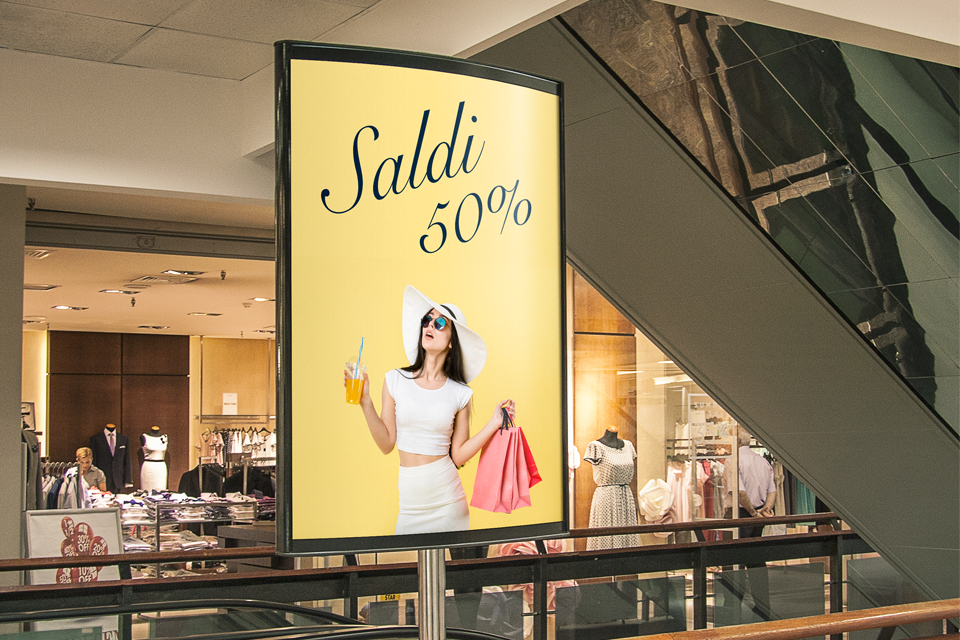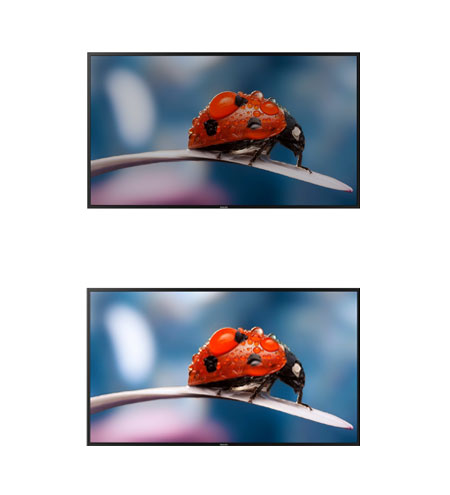How bright should my monitor be?

When you decide to install one or more digital signage monitors, there are numerous aspects to take into consideration. The first is definitely the luminosity. This has a decisive impact on the price of the monitor, energy consumption and, above all, the performance of your digital signage system.
So let’s take a look at how to choose the monitor that best suits your business. Whatever that may be.


Brightness vs illumination. Outdoor vs indoor.
Before we enter the world of nits, we must clarify the concepts of brightness and illumination.
Brightness refers to the amount of light that is reflected or emitted by the screen. Its unit of measurement is the NIT.
L’Illumination refers to the light that is emitted from the light sources present in an external or internal environment. This is referred to as ambient light, whether it’s a lamp or sunlight.



How do I choose the right luminosity?
It is clear that for the contents of a screen to be visible, its luminosity must be greater than the surrounding illumination. This largely depends on the type of environment in which the monitor is installed and what light sources are present.
If the ambient light varies throughout the day, it is good to take into account the maximum luminosity the screen can reach. It is important that this is not excessive. In fact, instead of enhancing the content transmitted, it would negatively affect the user’s viewing experience. Especially if it’s an indoor environment.
Fortunately, in the case of variable light conditions, technology comes to our aid. Many monitors are equipped with a sensor that allows the system to automatically adjust their luminosity based on ambient light.

In general, we can say that:
- Monitors installed outdoor must have a higher luminosity than monitors installed indoors.
- Indoor monitors that are illuminated by sunlight must have a higher brightness than a standard indoor monitor.
- If an indoor monitor is located behind a shop window, the reflection of sunlight must be taken into account when purchasing the screen.
- Indoor monitors must not be illuminated by lights so as to avoid reflections that reduce their legibility.
The right number of nits
At this point, you may be wondering: but how many nits does my monitor have to have?
- If it is an indoor monitor must have a brightness of at least 300 nits.
- If it is an outdoor monitor monitors with a nit number between 2500 and 4000 are recommended. Anyway, it’s a good idea to never go below 2500 nits.
These are clearly general guidelines. At the end of this guide, you’ll find a more detailed table.
UV and anti-glare films
UV and anti-reflective films are little known to the uninitiated. Yet they are extremely functional in ensuring optimal performance of screens over time and also help to prolong their longevity.
Anti-reflective films further improve the visibility of the content displayed on the monitor even if the screen is exposed to the sun.
UV films, on the other hand, protect the screen from the damage that continuous exposure to sunlight can cause. The temperatures that are reached can be very high and risk irreparably impairing the functioning of the display. This type of film reduces the likelihood of this happening by making the monitor last longer. It also increases the likelihood that a repair or replacement will be covered under warranty, should the monitor stop working.
| Airport | |
|---|---|
| Hall | 700-2500 nit |
| Gates | 700-2500 nit |
| Check-in | 600-2500 nit |
| Company | |
|---|---|
| Corridors | 350-500 nit |
| Meeting room | 350-800 nit |
| Reception | 500-1600 nit |
| Office | 350-800 nit |
| Hall | 700-2500 nit |
| Cinema | |
|---|---|
| Ticket Office | 400-2500 nit |
| Windows | 1700-2500 nit |
| Outdoor | 2500 nit |
| School | |
|---|---|
| Classroom | 350-800 nit |
| Auditorium | 400-1600 nit |
| Corridors | 350-600 nit |
| Doctor’s ambulatory | |
|---|---|
| Reception | 500-1600 nit |
| Waiting room | 350-800 nit |
| Meeting room MDT | 350-650 nit |
| Hotel | |
|---|---|
| Hall | 700-2500 nit |
| Reception | 350-1600 nit |
| Corridors | 350-500 nit |
| Entertainment | |
|---|---|
| Museum | 400-1600 nit |
| Events area | 400-1600 nit |
| Staging | |
|---|---|
| Outdoor | 2500 nit |
| Fair stand | 500-2500 nit |
| Retail | |
|---|---|
| External façade | 1700-2500 nit |
| Entrance | 600-1600 nit |
| Pharmacy Indoor | 500-1600 nit |
| POS Indoor | 500-1000 nit |
| Supermarket | 500-900 nit |
| Showroom | 600-2500 nit |
| Catering | |
|---|---|
| Showcase | 1700-2500 nit |
| Menu board | 350-800 nit |
| Self-ordering kiosk | 500-900 nit |
| POS Indoor | 500-1000 nit |
| Menu board drive-through | 2500 nit |
